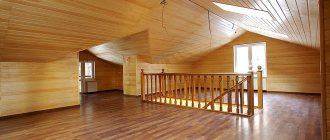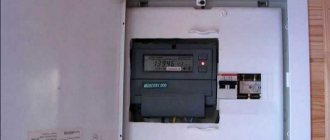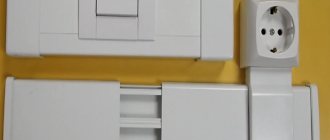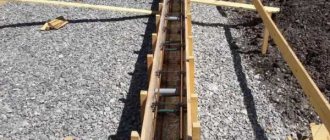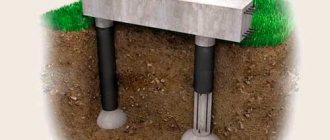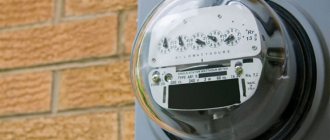It is completely unsightly when, after renovation of a room, the wires are not hidden in the wall, but lie randomly on the floor or hanging on the wall. They not only spoil the overall picture of the room, but can also lead to an accident. In some cases, you have to think about how to connect some kind of device without spoiling the design of the room. Of course, it is worth paying attention to how to hide wires in an apartment.
Every home has one or another household appliance connected, and in any case, the wires on the wall from these appliances can be conspicuous in one way or another. This article will give detailed instructions on how to hide wires on the wall, in the wall and in the floor.
For what purposes is it necessary to lay a cable channel?
Electrical networks created using a mounting box are different:
- mobility;
- installation flexibility;
- low cost of installation;
- increased electrical and fire safety;
- aesthetic appearance.
Using an electrical box is especially beneficial in rooms where renovations have already been done. To attach the base of the plastic channel, there is no need to disturb the external finish of the walls.
The mounting box is used to protect and insulate external wires in apartment buildings, private homes, and various industrial facilities.
Most often, wall and floor plastic boxes are used to connect electricity, the Internet, cable television, and when installing intercoms. It is suitable for insulating external electrical wiring in rooms with high humidity. It can be installed in the bathroom if the owners want to keep the ceramic tiles on the walls intact.
How to hide a wire on the floor?
The smartest way to disguise unwanted wires is to hide them in the baseboard. For this purpose, there are specially designed skirting boards with a recess for the cable. You need to remove the retractable center of the plinth, insert the cable inside and secure the middle of the plinth in place.
Wires under the baseboard
Wires in recesses around the perimeter of the ceiling
If the question of masking the wire arose during the repair, you can make a hole in the floor with a hammer drill, then insert the wire into the corrugation and lay it in the hole. After the procedure is completed, it is necessary to fill the holes with cement.
Panel for wires
Wire wall decor
Installation nuances
Creating convenient and high-quality wiring in an apartment or private house ensures reliable and safe connection of all electrical appliances. Before deciding how to attach the cable channel to the wall, and which screws are best to install the boxes on, it’s worth planning.
Important! You can plan the route for laying wires in any direction and with a different number of turns, but you need to make sure that there are no places where the wires could be damaged.
General recommendations include:
- place the switches on the side of the door handle at a height of 90–160 cm from the floor;
- a minimum distance of 15 cm is required from the ceiling, and 10 cm from the window;
- horizontal wiring lines should be located at a distance of at least 30 cm from the floor.
Beginners installing cable ducts for electrical wiring of any kind should stock up on material 10–15% more than calculated in the drawings.
Advice: do not cut the entire box into pieces at once: during the fastening process, shifts may occur upward or downward and parts of a different length will be required.
Hiding wires from the computer
In the modern world, there is a computer in almost every apartment, so the most pressing problem is how to hide the wires from the computer. A string of wires not only looks messy, but is also unsafe. To make things a little easier, use wireless technology where possible. Today you can do without the use of wires in the following computer components:
- Computer mouse.
- WiFi router.
- Keyboard.
- Acoustic system.
Computer wires in a black case
Computer wire clamps
A wireless connection will help you get rid of several unnecessary wires. To ensure that the electrical wires do not lie twisted on the floor, it is necessary to purchase wires of the required length, this way the wires will be stretched. Wires that lie on the floor can be secured under the table with tape or other adhesive tape.
Excess wires can also be disguised in a decorative box. You can choose a box that will look beautiful in combination with the design of the room or cover it with suitable materials.
Another option is to hide the wire in the baseboard. You can read above how this is done.
Computer wire box
Classification of cable channels
Cable channels are classified according to the following main characteristics:
- According to the material of manufacture, they are distinguished:
- metal;
- plastic.
- Based on location, cable boxes are divided into the following types:
- floor products;
- wall, parapet or main (the same wall, only with dimensions over 80 mm in width and 40 mm in height);
- ceiling;
- baseboards.
Types of cable channels
- According to the degree of hardness they are divided into:
- rigid cabinet products, represented by rigid straight plastic or metal boxes;
- flexible cable channels that can bend in different directions.
Cable as a detail of interior, style
Loft is one of the few interior styles in which it is permissible not to hide, but, on the contrary, to emphasize in every possible way the presence of wires in a variety of places. Original retro-style wiring, which not so long ago was found only in truly old houses, is now offered by many companies specializing in electrical wiring.
In such an interior it is easy to find:
In the loft, the wires are not hidden at all, but no one has canceled safety here - when there is a risk of accidental damage, it is better to hide the element in massive cable channels, stylized as copper, steel, corrugated pipes, wooden boxes, etc.
Main varieties
Depending on the modification, the dimensions of the cable channels, their shape, material of manufacture and technical parameters vary. In everyday life or for registration of wiring in offices, the following are most often found:
| Name | Peculiarities | Areas of application |
| Mini | Box with a small cross-section. They hold up to 3 small cables. Installation of mini cable channels is carried out using self-tapping screws. When turning the wires, the joints are poured at an angle of 45° or plugs are installed. Typical sizes range from 10x10 mm to 60x80 mm | Most often used for Internet, television and telephony. |
| Flattened floor | An oval profile, which is used if it is not possible to route cables around the perimeter of an office or apartment. When installing, one edge of the box is attached to the floor with self-tapping screws, then it is closed with a lid and plugs are placed at the joints. Made from aluminum, galvanized or hard plastic. Size variations: from 16×6.5 cm to 7.5×1.5 cm. Colors include white, black grey, brown and a natural wood option. | They are laid in offices where it is necessary to run the wire to office equipment or a workplace in the center of the wall. Suitable for one or more medium sized cables. |
| Parapet guides | Main (parapet) boxes are made of plastic. There are several variations depending on the type of profile: similar to the “P” burka without a partition, “W” - with three sections, “G” for corners, curly and universal. The main advantage is the ability to adjust the rotation angle from 7 to 45° using adapters. Dimensions from 10×6 cm to 1×2 cm. | Can be used in any domestic premises. |
| Perforated with open access | Made of plastic or metal, it is 30-40% lighter than conventional options with easier installation. They provide good air circulation, have constant access to the wire in different parts of the network and can be installed on curved surfaces. | They are used to connect wires to each other when entering electrical panels or in production workshops, where the appearance of the wiring is not important. |
| Skirting floors | This type of cable duct is fastened using self-tapping screws to the walls or floor. Their design resembles hollow sections with a lid on top. The main selection parameter is the width of the diagonal wall (5 and 7 cm). The advantages include versatility for residential and office premises, variability of colors and immunity to ultraviolet rays. After dismantling the plinth cable channel, it can be reused. | Offices, administrative buildings, apartments and private houses. |
| Flexible | Prefabricated structures made of metal or plastic. Available in different colors, there are corrugated models. Such cable channels protect against mechanical damage, vibration or chemical reactions with the external environment. Such a box is flexible, can reduce noise levels and provide free access to wiring. At the same time, it is easy to replace a separate element, and installation does not require much time. By diameter you can find the following subtypes:
| When connecting wires to machines and other equipment in production. |
| Corner under the ceiling | Installation of the corner cable channel is carried out at the joint between the wall and the ceiling. The triangular shape of the structure fits perfectly into a flat corner. The maximum dimensions of the internal cavity are 4 by 4 cm. Simple installation and light weight of the structure are among the positive aspects of the box. Such cable channels are fixed only under the ceiling due to their fragility. | Any office and residential premises. |
| Transparent with backlight | Externally similar to corner ceiling models. They have a completely transparent lid, tilted at an angle of 45°. They have built-in lighting. | They are used to decorate lighting systems under the ceiling, frame kitchen cabinets and other decorative elements. |
| Industrial wire | Made from metal wire. They provide free air circulation, quick access to wires and do not accumulate dust inside the structure. | Installed in warehouses and workshops, as well as behind suspended ceilings. |
The types of cable channels listed can be divided according to the degree of rigidity, the presence of a cover or the type of locks at the joints. However, installation of wiring boxes in an apartment is carried out according to the same principle and with general rules.
Types and sizes
Types of cable channels differ from each other mainly in shape, only some use special materials - for example, transparent plastic or aluminum and its alloys.
There are different models for different occasions
Skirting cable channels
If you want to covertly lay cables without having to dig into the walls, take a closer look at plinth cable channels. These are a kind of plastic plinths, in the internal cavities of which wires are laid. They are available in different colors and will suit different decor styles.
Plastic cable channels of plinth type
Manufacturers of entire systems of plinth cable channels, in addition to long trays, produce a number of additional devices that allow the construction of any shape. These are external and internal corners, bends of various shapes, plugs, mounting and multi-module boxes on which switches and sockets can be installed.
There is also an option to install sockets directly at the baseboard level. For older people, this option is not the best, and for young people, low slopes are not a problem. But it doesn't attract as much attention.
The socket can be installed directly at the baseboard level
This type of cable channels is available in different color variations - from white, gray and black to colors that imitate wood and metal surfaces. The disadvantage is the rather high price, although it cannot be compared with the payment for wall gating.
Available sizes of SL Hager products are 20*50 mm, 20*70 mm, 15*100 mm, 25*100 mm. The Legrand company has two series: mini with dimensions - 20*12.5 mm, 32*12.5 mm, 40*12.5 mm, 32*16 mm, 40*16 mm, 60*60 mm, 60 *20 mm, 75*20 mm. The second series - DPL has the following dimensions: 35*80 mm, 35*105 mm, 50*80 mm, 50*105 mm, 50*150 mm, 65*150 mm. Another video about another system of baseboard cable channels.
p;
Floor-standing
This type of cable ducts also differs in shape and installation method. It is installed on the floor, so on one side it has a rounded shape, so it does not interfere with movement. Available in impact-resistant plastic or aluminum. The shape is the same.
Floor cable channels do not interfere with movement
Floor cable trays are used as part of a system - when you need to route wiring to a table or lighting fixture that is located far from the walls. It successfully replaces carriers and extension cords.
How are the dimensions of floor cable ducts determined?
The following sizes are available for sale:
- 50*12 mm;
- 75*17 mm;
- 92*20 mm;
- 160*65 mm;
The color scheme is not very diverse: usually there are gray, white and black. The joints of two strips, corners and turns can be designed using shaped products of a suitable size. First, the lower part is mounted, the conductors are laid, after which the cover is snapped on.
Rules for installing floor cable channels from Legrand
Then accessories are installed in the right places - corners, joints. They are made in such a way that they simply snap into place, providing a secure fit. At the same time, the degree of protection is even maintained (usually IP40).
Parapet
Parapet cable channels (also called main cable channels) are similar in structure to plinth ones. They differ slightly in shape, but mainly in that they are mounted above floor level. They also consist of various elements that allow you to assemble any configuration.
Parapet plastic cable trays
Mainly used in offices or factories. If such structures are installed in private houses or apartments, they try to match the color of the wall decoration. The routes connecting the external and internal units of air conditioners are usually closed.
Dimensions can be:
- width 80 mm, 100 mm, 120 mm, 150 mm;
- height 40 mm, 55 mm, 60 mm.
For each type of section there is a set of shaped elements - external and internal corners, plugs, splitters, etc. There may be several colors, but the main ones are white and milky. The rest are quite hard to find.
Mini
A smaller version of parapet cable channels, into which a certain number of conductors can be laid - television, telephone, for the Internet.
Such options are used more often in apartments and houses
When using this product, the corners are formed not with special shaped parts, but by sawing the box at the desired angle (usually 45°, only taking into account whether it is internal or external).
Dimensions can be:
- width 10 mm, 12 mm, 16 mm, 20 mm, 25 mm, 40 mm, 60 mm, 80 mm, 100 mm.
- height - 10 mm, 12 mm, 16 mm, 20 mm, 25 mm, 40 mm, 60 mm.
Combinations of these sizes provide a large number of options. There are wide and low, there are narrow and high, so there is a choice and you can choose it.
Corner
Due to their design, corner cable ducts can be installed at the junction of the wall and ceiling or instead of a baseboard. If the corners are carefully executed (they must also be cut with a hacksaw at the desired angle), they look like a decorative element.
This type of cable ducts are mounted in corners - at the junction of the ceiling and wall
The disadvantage is that they do not have as much space as baseboards, and the walls are thinner, so there is a high probability of damage when laying underneath. The most common sizes are 40*40 mm, so you can’t fit a lot of cables in them.
For LED strips
This is a type of corner version of cable trays. They differ in that the lid is made of transparent or translucent plastic.
Some types of trays for LED strips
Mounted under the ceiling in corners, on the bottom panel of kitchen cabinets or in the cabinets and cupboards themselves. They don’t have wiring installed, so the organization of the internal space is completely different - they make a platform on which it is convenient to attach a strip of LEDs. Its position is selected based on the required direction of the light flux.
Metal trays for cable laying
This type of product in private homes is used mainly for laying wiring in combustible walls - during the construction of frame or panel houses. Trays are placed inside the wall and ceiling, cables are pulled into them, and in the right places they are led out through the wall or ceiling cladding.
Examples of metal trays: solid, perforated, wire
Also, some types (wire cable channels) are used for lighting a stretch or suspended ceiling. With their use, installation time is sharply reduced, because instead of installing a large number of small fasteners, you need to attach several hangers for trays, and then lay all the cables in them.
Dimensions of metal cable trays:
- width from 50 mm, 80 mm, 100 mm, 150 mm, 200 mm and further up to 600 mm in increments of 100 mm;
- height - 50 mm, 80 mm, 100 mm;
- the length of one piece is 3m.
So you can choose one for any number of conductors.
Features of open wiring in a box
Open wiring using electrical boxes is attractive due to the ease of installation, repair and simplicity of carrying out an ongoing inspection of the condition of cable lines inside the box.
Note! Installation of hidden wiring is inherently comparable to the overhaul of the entire room. During the replacement of hidden wiring elements, the room is virtually unsuitable for work or even staying in it due to clouds of dust formed when previously sealed grooves are opened.
The industry produces sets of accessories for cable channels, with the help of which an external type cable route is mounted, duplicating the outlines of the walls, floor and ceiling of the room.
During the operation of cable lines, if it is necessary to repair or replace the electrical wiring laid in the box, it is enough to remove the cover and perform the required work. An important advantage of open wiring in cable channels is the ability to lay additional wires and cables in already laid boxes without finishing work.
Calculation of the size of a plastic box for electrical wiring
Before you purchase cable channels for installing electrical wiring, you must first draw a layout diagram of the structure in the room, indicating the type of cable channels and the length of each section. After this, determine the required size of each type of tray. To calculate the size of the box, you need to know the cross-section of the wires and their number.
Attention! It is recommended to take a cable channel with a small margin in length (10%) and width.
The length reserve takes into account the additional costs that arise during installation in places with corners, as well as in the event of material damage. It is also advisable to have free space inside the box, which may be needed when laying additional electrical cables.
There is no need to purchase a wide tray if you initially plan to lay only one cable, since its price also depends on the width of the product. Usually the calculation is carried out taking into account an increase in the number of wires by 2-3 pieces.
Also, taking into account the “Rules for Electrical Installations”, in the case of multi-layer filling of plastic cable channels, the sum of the cross-sections of all conductors located in them should not exceed 40% of the cross-section of the product itself in the case of using a box with a lid or 30% in the case of a blind box.
Table for calculating the minimum dimensions of cable channels
Wire cross-section, mm2 Design and dimensions (height and width, mm) of the box
| single-section | two-section | three-section | |||||||||
| 10x22 | 10x30 | 10x22 | 10x30 | 15x54 | 10x40 | ||||||
| number of wires in one section | |||||||||||
| 1,5 | 10 | 12 | 3 | 3 | 5 | 5 | 19 | 13 | 5 | 4 | 5 |
| 2,5 | 7 | 10 | 2 | 2 | 3 | 3 | 13 | 13 | 3 | 3 | 3 |
| 4 | 4 | 8 | 1 | 1 | 2 | 2 | 10 | 13 | 2 | 2 | 2 |
| 6 | 2 | 3 | 1 | 1 | 1 | 1 | 5 | 5 | 1 | 1 | 1 |
Cable channels are delivered to hardware stores in packages. Depending on the size of the trays, the packaging differs in the number of products and, accordingly, in the total footage. To calculate the total length of cable channels in a package, the number of products is multiplied by the standard length of one tray (2 m).
A table of parameters for one package, depending on the size of one box, is shown in the figure. Parameters of one package of electrical boxes, depending on their size
On a note. When purchasing boxes, it is advisable to purchase fittings for them (plugs, corners, branches, etc.).
Also, for household purposes, it is better to purchase single-lock products, as they will last longer than double-lock ones. This is due to the fact that the wall thickness of single-lock structures is greater, and, consequently, the products themselves are more durable.
Correctly sized cable channels will allow you to quickly install the system, and the additional space inside the box will make it possible to easily add wires to the system without the use of additional trays.
Drawing of cable channel passage
The next step will be to make a drawing of the cable trays, taking into account the location of all junction boxes, switches and sockets. To do this, it is better to use a program with the ability to display three-dimensional images.
Wiring diagram for cable channels
Preparation for installation, surface marking
Open installation imposes increased aesthetic requirements: everything must be “smooth and parallel.” In this case, the box is fixed along the preliminary marking lines. It is carried out using a level (laser or water, construction), a square, a tape measure, a marker, a ruler, a pencil (marker).
Installation instructions Install the box according to the marked markings
Here's how to properly divide the process into stages:
- Initially, a diagram of the optimal electrical wiring is drawn up;
- lines on the wall are drawn by tapping according to the level, all branches are strictly at right angles;
- on them, with a pencil, according to the existing plan, the location of distribution boxes, sockets, switches is marked;
- necessary adjustments are made as work progresses.
You can make turns and angles yourself
At the end, you should calculate the length of the marking stripes, the number of installation points, turns, and corners. This will allow you to order the exact amount of working material.
Turns and corners can be purchased either ready-made or made from cable duct yourself. Using the former leads to increased costs. But work on difficult sections is faster, and the appearance of the route is better than when using homemade ones.
Self-production will require the additional use of sealants to seal seams.
If you have a laser, you don’t have to make markings
Boxes for installation can be cut in advance (for a large area) or during the process. The first case begins with precise measurements using a tape measure along the marking lines.
Then they cut the working material into the required lengths in order to install it later. Accuracy of measurements is important here.
It is easier to carry out the work according to the scheme: try it on - cut it - fasten it.
Drawing straight marking lines and using ready-made components will allow you to attach the cable channel without spoiling the beauty of the room.
Installation procedure and features
According to the rules, wiring is laid horizontally and vertically; inclined installation is permissible only on stairs. In other cases, the rules are not deviated from when wiring is open. To obtain an even cut when installing plastic cable channels with thin stacks, use metal scissors or others, but the cutting edge must be sharp. Aluminum and metal trays are cut with a hacksaw. Thick plastic can also be cut with the same tool - there will be a smooth edge and the profile will not wrinkle.
If you need a piece of a certain length - for a outlet, for example, you need to cut it in this order: snap the lid, align the edge, apply marks on the lid and body at the same time. Then you can cut it separately. With this order, the length of both products will be the same.
Please note that when passing the corner, the lid is not cut into two parts, but only the side walls are cut so that it can be bent. Do not forget that when going around the outer corner, the cover should be longer than the tray; in this case, it is better to mark the places of cuts on it after the cable channel body is secured.
Rules for installing plastic cable trays
The cable channel is attached to a non-wooden surface using nails with a wide head (screws can be used), or to plaster or plasterboard walls using self-tapping screws. For installation on brick or concrete walls, installation with dowels is required. The fastening step of the fasteners is about 60-70 cm; at the ends of the profile and at the joints, the fasteners are installed at a distance of 3-5 cm from the edge.
If two pieces of cable channels are joined, the cover must be positioned so that the joints of the housing and the cover do not coincide. Otherwise, the joint will be too noticeable and an unevenness may form, which will further emphasize the joint.
Order of laying wires
We lay conductors in the mounted housings. To prevent the walls of the cable channels from sagging, we install supporting jumpers with some steps, and then snap the covers. At this point, the installation of wiring in the cable channels can be considered complete.
Definition, structure, purpose
Cable channels are plastic or metal boxes for hidden or open laying of wires and cables. Can be used both outdoors and indoors. They are also called cable trays and boxes, sometimes the word “electrical” is added.
Consists of a body and a cover. The cross-sections are mainly rectangular and square, but there are others, more specific (they will also be discussed later). The body can be solid, or perforated. Perforated housings are rarely needed for better ventilation and faster cooling.
The cover and body of the cable channel are connected using a lock - they snap into place. This is why cable trays are convenient - you can open, check, lay a new or remove unnecessary wire at any time. When purchasing, pay attention to the structure and quality of the locks - ease of use depends on them. The best, at this stage, is considered a double lock. It provides sufficient hold and allows the lid to be opened/closed multiple times.
Some types of cable channels can be separated internally by partitions
The internal space of the cable channel can be divided by partitions. This is done so that it is possible to separate power (wiring) and low-current (television, Internet, telephone, etc.) cables. It is advisable to lay them separately so that they do not interfere with each other. Some companies have developed a design so that partitions can be installed independently. They are sold separately and fit onto the tabs on the inner wall of the case (an example of such tabs is in the photo on the right).
Material: metal or plastic. If you choose plastic cable channels, please note that it must be non-flammable or flame retardant (read in the description). Ideally, it will also emit little smoke - just in case.
General markup rules
Correctly executed markings clearly indicate how to attach the cable channel to the wall, taking into account all the executive elements of the electrical wiring. To apply marking lines you need to prepare:
- ruler and pencil;
- bubble or other type building level;
- beating cord, also called coated thread, with pigment.
The sequence of marking is as follows:
- In accordance with the architecture of the room and the electrical wiring diagram from the distribution board, the placement points for sockets, switches, and mounting boxes are determined. The optimal dimensions of their distance from the joints of the floor with the walls, corners, etc. are measured with a ruler. Appropriate marks are made on the walls with a pencil.
- In all places where the cable route is supposed to be laid, straight lines are drawn with a tapping cord.
- The construction level controls compliance with the vertical and horizontal lines.
Fixing the cable channel along the marked route
Fastening the electrical tray to the wall can be done with liquid nails, wood or metal screws, or dowel nails. It is recommended to screw in the fasteners in a staggered pattern. When using liquid nails, glue should be applied to the back of the box in a zigzag pattern.
Attaching the cable channel to the wall
Wall mounting options
There are several ways to attach cable ducts to a ceiling or wall:
- Glue the structure with superglue or a special solution. Not the most reliable option, since under the influence of moisture or other harmful factors, the integrity of the adhesive base may be damaged and the cable channel may come off. And there is also no way to dismantle without harming the repair.
- Screw to the surface using galvanized self-tapping screws. Suitable for wooden or plasterboard surfaces.
- For a concrete or brick wall, dowel-nails are used.
- Combine the method of gluing and screwing in screws.
In specialized stores you can find a separate type of cable channels, which have one adhesive side. For their installation, no additional devices are required, only the material itself.
Important! The boxes must be cut with the lids snapped on them. And when constructing several sections into one route, ensure that the joints match.
Specifics of gluing cable channel
Gluing is as easy as shelling pears, but you need to take into account that you need to completely forget about dismantling the glued box. You can’t just tear it off, only together with a piece of the wall or its decoration. True, installation will require a minimum of effort and time; the only consumables are glue, for example, “liquid nails.”
The algorithm is as follows:
- We apply the adhesive composition in a kind of zigzag with a step between the “tops” equal to approximately 1.5 times the width of the box;
- We apply the base treated with glue to the wall, but do not fix it on it, but remove it to the side;
- wait until the remaining adhesive trace on the wall thickens;
- install the channel in place and press firmly;
- again we wait for the glue to harden.
For your own peace of mind and increased reliability, you can supplement the adhesive fastening with nails driven along the central axis of the box in increments of 50-60 cm.
Only after hardening will it be possible to begin laying the cable, which for convenience needs to be fixed in the channel. For permanent fixation, special plastic holders are useful. Thrifty craftsmen can use available devices: pieces of the cover or the cable channel itself. Temporary fixtures will undoubtedly need to be removed before attaching the cover.
Advice. It is more convenient to lay the cable in the constructed system, alternating with snapping the cover. Installed part of the wiring in the channel, then clicked it, etc.
External camouflage
If they have an artistic taste, many people prefer to decorate rather than hide the wires. From standard wiring it is quite possible to make a real art object, painting, panel with your own hands. Typically, cables come in black or white, but if desired, you can find a material of a brighter shade.
Next, you should choose a drawing that suits the style of the interior, sketch it with a non-greasy pencil directly on the wall. Afterwards, you need to measure the length of the circuit using a thread in order to purchase the missing amount of cable (part of it will only serve a decorative role).
You can make any wall pattern out of wires. Often the following are taken as a basis:
- branch with leaves, sitting birds;
- one or more trees;
- giant light bulb;
- power station;
- highway (in the nursery);
- decorative fence.
The wires are attached to the wall with special fasteners, which can then be decorated with any suitable material - fabric, special paper, designer decorations. Also, unsightly protruding wires are hidden behind tall indoor plants, well-placed furniture, carpeting, door frames, and windows.
Fastening on the surface of plasterboard boards
Attaching boxes to plasterboard boards (hereinafter referred to as GCP) with standard hardware is very problematic, since GCP are a layer of gypsum located between layers of paper. The compressive strength of such drywall is critical. If you are slightly “overzealous” when tightening the self-tapping screw while screwing the base of the box to the GKP, then the threaded part of the fastener in the plaster will begin to turn idle, reducing the strength of the fastening to zero.
To fix the boxes on the fragile surface of the GCP, reliable fastening can only be ensured by using special dowels, commonly called “butterflies”, or by using mounting adhesive, called “liquid nails”.
Decor with stickers, stickers, improvised means
Decorative elements that help hide or neatly secure numerous cords are sold almost everywhere and are quite inexpensive. In this way you can decorate the cord coming from the sconce above the bed in the bedroom. You can decorate the cable from the TV or the cord from the heater running along the floor using a “toy” mini-fence glued to the baseboard. If you plan to carefully hide many elements behind a fence, tie clamps are used.
Decorative clamps are now sold in all electrical stores. They are an adjustable flexible clip decorated with leaves, flowers, butterflies, birds, and houses. In romantic interiors, laces are decorated with sparkles and feathers, in a children's room - with stickers depicting fairy tale characters and favorite cartoons.
Instructions on making corner joints
The main requirement of this work is the absence of visible “gaps” between the elements after snapping the covers. To avoid any cracks, you need to carefully measure and cut carefully, using a metal blade and a miter box or trimmer. Therefore, those who want to build a cable channel system on their own are strongly recommended to use accessories that hide all the flaws.
Minor errors can be masked with a color-matched sealant, but there is also a way to form a corner transition. Instead of cutting two pieces at the traditional 45º angle, you can simply cut the walls of the bases to their full width. In such cases, the boxes are installed with an overlap. Cuts and cutouts on the walls of the cable channel are made with metal scissors.
We are convinced that there are no special tricks in fastening electrical boxes. Connecting sockets and switches to the mains laid in them is done in a standard way. If the performer is patient, you can rightfully be proud of the result.
Additional electrical wiring in cable duct
There are situations when, after repairs, you need to add an additional outlet or other elements. It is very simple to solve this problem if there is electrical wiring laid in the cable route. It is enough to purchase a wire, box and accessories from one manufacturer and add the required point.
If necessary, it is easy to lay additional wire in a plastic box
It is not recommended to use material from another company. This will lead to a violation of the aesthetic appearance of the room.
Tips for installing corners and joints of cable channels
When using special accessories, the places where plastic cable channels pass through the external and internal corners of the walls or floor are closed, respectively, with external and internal corners, aesthetically fitting into the interior of the room. The joints of the boxes can be trimmed with slight deviations from right angles and straightness of the cut, if you use connectors that hide the junctions of the sections.
In the absence of factory-made elements, corner transitions can be made as follows:
- To pass the internal corner you need:
- in the place where the route bends, make cuts along the sides of the box with a cutting depth to the level of the plastic base;
- bend the box at the desired internal angle;
- install the box at the transition site and attach it to the wall using one of the previously described methods (depending on the wall material);
- close the box with pieces of lids.
- For installation along the outer corner, the box is cut and fixed in the same way as for the inner corner. However, cuts are made on the lid at an angle of 450 with the center of the angle on the bend line.
The use of cable channels when arranging home and workshop electrical wiring greatly simplifies the design and installation of cable networks, speeds up installation work and allows the full reuse of wires and cables after dismantling the wiring.
